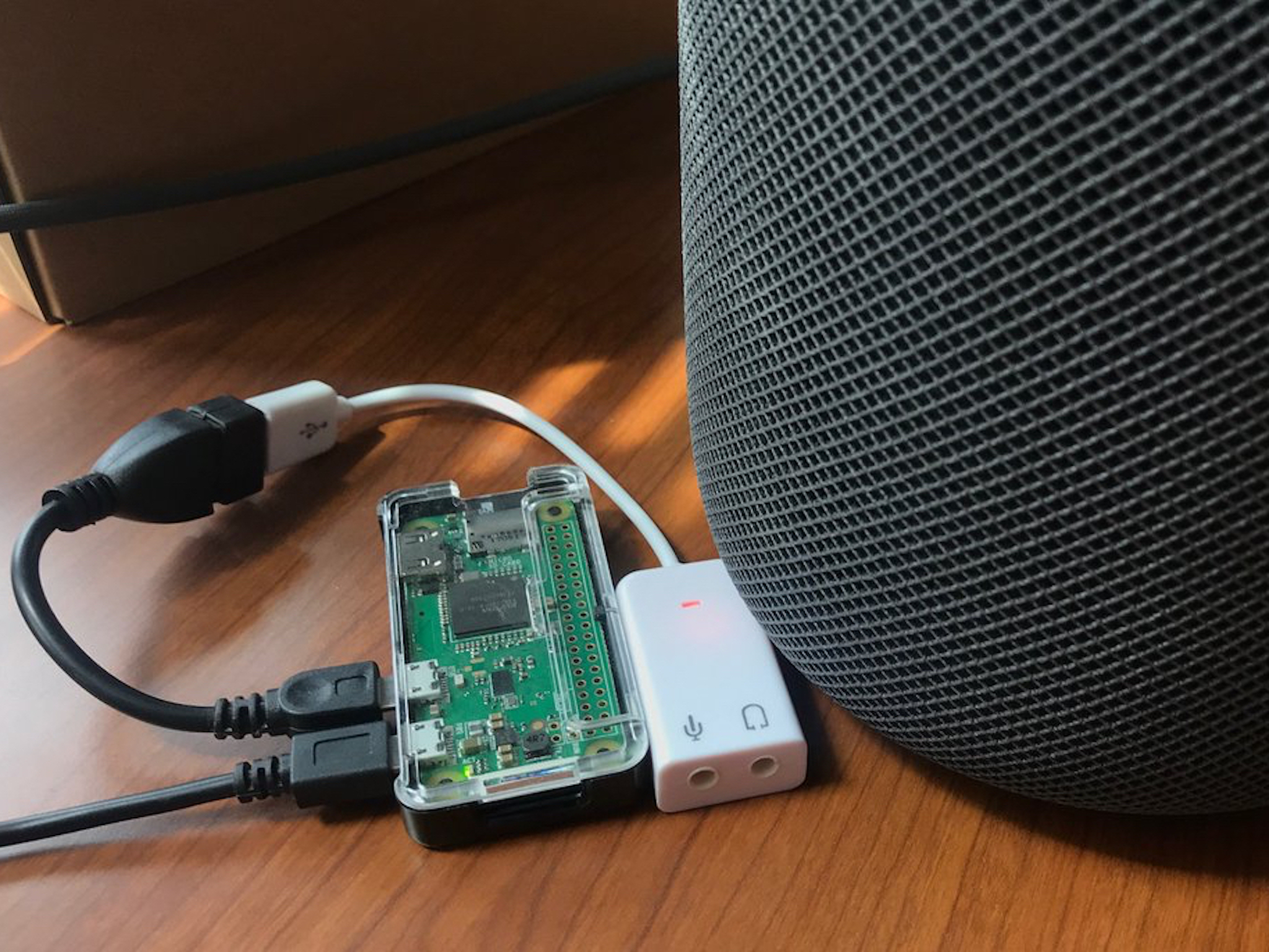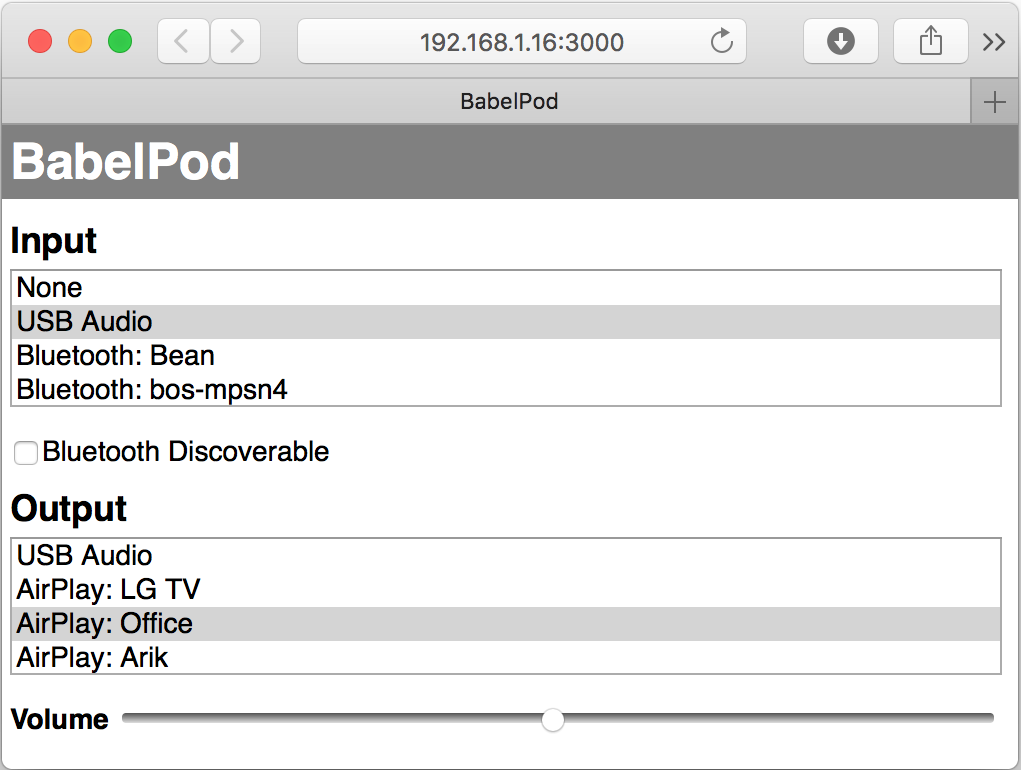How to hack Homepod to add line-in and Bluetooth support

HomePod was built to sound great. It boasts a double-whammy of Apple-engineered audio technology and advanced software, allowing it to deliver impressive, high-fidelity sound that fills a space pretty well no matter where you put it. What it wasn't built for, however, was use with Bluetooth or a line-in — it's limited to Apple Music and AirPlay only. Not the biggest issue if you only use Apple devices, but what if you want to play audio from another source, like a turntable? If you're software architect Andrew Faden, you build your own solution.
Faden's workaround, which he calls "BabelPod," acts as a sort of translator between outside audio devices and your HomePod speaker. Using a $30 Raspberry Pi Zero W kit, a $9 USB audio adapter, and software Faden wrote himself, the little hardware hack takes audio input from line-in or Bluetooth and outputs it wirelessly to the HomePod via Airplay. Once built, BabelPod's web interface allows users to select both the source of the audio they want to play (either line-in or Bluetooth) as well as the AirPlay-enabled device they'd like to broadcast it to (HomePod, in this case).

Though this is a cool and — if you've got some tech skills — relatively simple workaround, it isn't 100% perfect. For one thing, Faden says that there is a two-second delay between when the audio input is received and when it is played on the HomePod, meaning BabelPod won't work well for gaming or playing the audio from a music video or film. Faden also notes that the quality of the audio is affected by the quality of the input, so if you plan on using a cheap line-in USB adapter, it won't sound as stellar as it would otherwise. The same goes for Bluetooth, which limits audio quality because its compressed. However, Faden does mention that it may be possible to improve the quality of Bluetooth audio by changing the standard SBC compression to use a higher bitrate or switching to a better compression algorithm like AAC or AptX (though he hasn't attempted either of those just yet).
All in all, if you're looking for a bit of a project and have a device that you'd like to use with your HomePod but that isn't compatible yet, you can check out Faden's full post for more info and complete step-by-step instructions. If you do try this hack for yourself, be sure to let me know how it goes. Happy experimenting!
Thoughts?
Do you think HomePod should add support for line-in and Bluetooth, or do you think it's just fine the way it is? Share your thoughts in the comments!
Master your iPhone in minutes
iMore offers spot-on advice and guidance from our team of experts, with decades of Apple device experience to lean on. Learn more with iMore!
Tory Foulk is a writer at Mobile Nations. She lives at the intersection of technology and sorcery and enjoys radio, bees, and houses in small towns. When she isn't working on articles, you'll likely find her listening to her favorite podcasts in a carefully curated blanket nest. You can follow her on Twitter at @tsfoulk.

